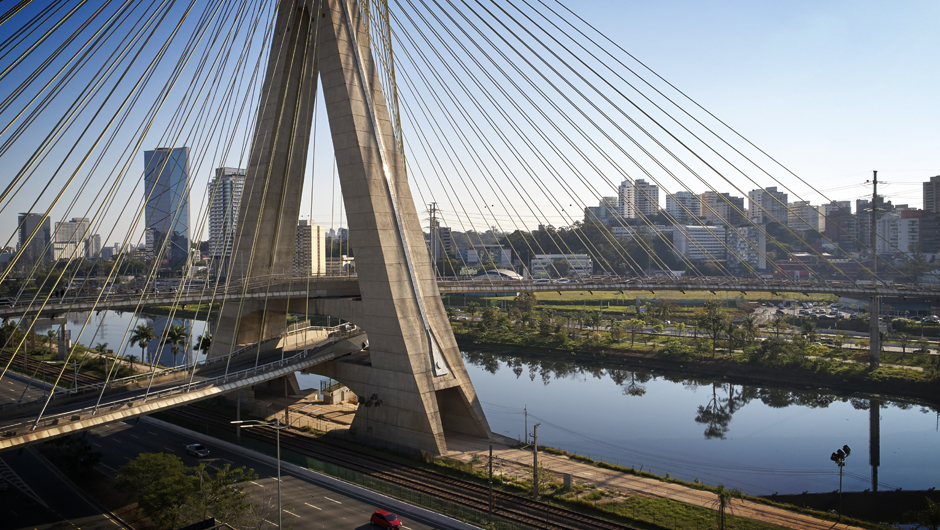Latam companies take natural approach to reduce FX hedging

Latin American FX markets have seen intense volatility in 2018, with regional FX swings of between 35-100 per cent, making efficient currency hedging necessary for the survival of corporates in many sectors. One of the region’s largest airlines, Latam Airlines, and Brazil-based Amaggi, a soybean producer and exporter, take two very different approaches to mitigating currency risk.
At Amaggi, which trades $3 billion FX per year and has $10 billion in various derivatives, the key was to build an in-house automated treasury system that finds internal offsets for FX exposures across the company’s businesses. Latam Airlines, based in Santiago, Chile, took a different approach to minimising its US dollar exposures by persuading suppliers to invoice in local currencies, or by changing suppliers completely.

Revenue for Amaggi’s soybean agribusiness and export operations is in US dollars, but its operations in Brazil are conducted in local currency. This leaves the group with a large exposure to USD-BRL fluctuations. Group treasurer Adriano Araujo told the audience at EuroFinance’s International Treasury, Cash and Risk Management event in Brazil earlier this month that his team was processing up to 60 hedge trades per day before it introduced an automated system.
The group now uses a bespoke hedging system, which took three years to develop in-house. The number of daily transactions is now reduced to fewer than 15 and Araujo explains that, through the automated system, treasury is able to take the net number and hedge the overall exposure. He says: “Only considering bank spreads, including operational processes, we estimate savings of around BRL 2 million per year using this system.”
Araujo is confident that his team can manage FX exposure gains or losses no matter what dollar fluctuations the market throws at them. “If exchange rates reach BRL 2 or BRL 5 today, for us it doesn’t make any difference.” He adds: “I think if I didn’t have this system today, I’d need three times more personnel than I have in treasury today and with less control, certainly.”
Latam Airlines, part of Latin America’s largest airline holding company, has a more complex FX risk profile, with more than 25 currencies to manage, arising from sales in its destinations around the world. It reported drops in both its operating income and net income in Q3 2018, with a loss of almost $70 million compared to the same quarter of 2017. Rising fuel prices is one of the main causes that has dented income for the airline but the Q3 report also cites a 24.9 per cent devaluation of the Brazilian real and the 84.6 per cent devaluation of the Argentine peso.
Speaking at the EuroFinance event in São Paulo, Gregorio Bekes, VP treasury & financial planning, Latam Airlines, noted that the FX volatility in the region this year has introduced significant volatility on the financials of corporates operating in Latin America. He explains the pressure this puts on cash management: “We see at least three big impacts: in the operational margin, thus in cash flow; in the non-operational margin, reflected in the foreign exchange gain or losses line, which affects the company’s bottom line; and finally, the company’s cash reserves, which could either depreciate or appreciate.”

But there are several fundamental differences between Amaggi and Latam Airlines. The commodities exporter is private and has annual revenue of $5 billion. It has operating expenses in Brazilian real while it receives dollar revenues from its exports. Shares in Latam Airlines are listed on the Santiago and New York stock exchanges and the company had total revenues of $10.2 billion in 2017. It has US dollar operating costs (such as fuel) but receives revenues from sales in more than two-dozen currencies. When possible, Bekes suggested that one should consider changing the currency of a contract or increasing exports to minimise the FX mismatch. When there is an imbalance between assets and liabilities, Bekes’s preference is to find or create a natural hedge where possible. “If one cannot do either of these two things to form a natural hedge, one will have to consider a financial hedge or derivatives.”
Amaggi’s automated hedging solution, which Araujo refers to as ‘treasury’s dream’, greatly reduced the company’s hedging requirements but one of the biggest challenges remained getting the right data from the company’s business divisions. Some entities, for example, didn’t include a due date for their payments, making the currency risk difficult to calculate. Araujo explained: “Without the due date, you don’t know when the position will happen. We asked the commercial department to change their processes and once they changed, hedging became much easier.”